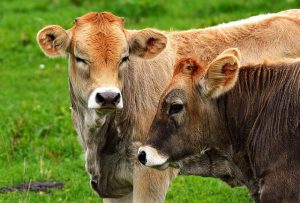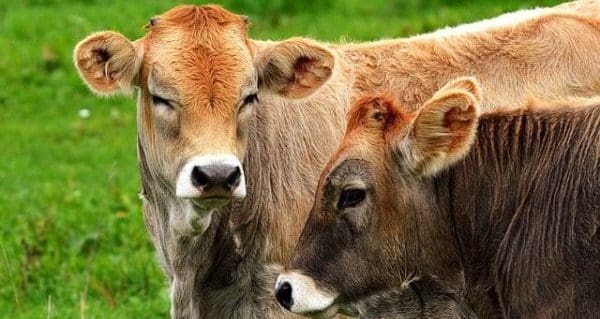Kenneth Brown
of The Crossroads
The Canadian Food Inspection Agency (CFIA) has nearly completed its investigation after the discovery of bovine tuberculosis in prairie cattle in 2016.
An official update by the CFIA was released on Feb. 12 and it states that the agency was nearing the completion of its investigation. The investigation will be officially closed after the CFIA receives the final results of laboratory culture tests in the spring.
The response and investigation to the threat of bovine tuberculosis (bovine TB) began in September 2016 after the United States Department of Agriculture notified the CFIA about a cow from Alberta found to have bovine TB as it was being slaughtered.
A total of six cases of bovine TB were confirmed from the initial investigation of a herd in southern Alberta. In total, the investigation involved approximately 30,000 animals from 79 trace-out herds and 71 trace-in herds. Trace-out herds received animals from the infected herd and trace-in herds sent animals to the infected herd.
According to the CFIA, there have been no additional cases of bovine TB discovered beyond the original six animals from the one infected heard in Alberta. The investigation expanded to include herds in Saskatchewan and Manitoba.
[emember_protected for=”2″ custom_msg=’For more on this story, please see the Mar. 2 print edition of The Cross Roads.’]
 Approximately 15,000 animals in trace-out herds – the riskier of the two categories – and 15,000 animals in trace-in herds were involved in the investigation. The CFIA states that all premises with cattle have been tested and released from quarantine.
Approximately 15,000 animals in trace-out herds – the riskier of the two categories – and 15,000 animals in trace-in herds were involved in the investigation. The CFIA states that all premises with cattle have been tested and released from quarantine.
Approximately 11,500 animals were destroyed with $39 million in compensation being paid to cattle producers. The Canada-Alberta Bovine Tuberculosis Assistance Initiative, a joint program under Agri-Recovery, also allocated up to $16.7 million for assistance with extraordinary quarantine costs. Lawrence MacAulay, the minister of Agriculture and Agri-Food, said in a statement that he is happy with the result.
“I am pleased that the Canadian Food Inspection Agency has now removed all quarantines from farms with cattle in Alberta, Saskatchewan and Manitoba,” he said in an official statement, “and that no additional cases of bovine tuberculosis have been detected.”
MacAulay applauded producers and their industry associations for playing a key role in the investigation because it allowed the country to retain its bovine TB free status and without any disruptions in access to international markets. The end of the investigation will mark a positive step forward for the industry.
Alberta Beef Producers (ABP) worked closely with the CFIA during the response and investigation. The producer association’s main role in the process was to keep producers and partners informed during the process.
“Our primary role was to ensure that the right information was getting out to the people who needed it,” said Karin Schmid, the beef production specialist for ABP. “There was a lot of discussion around various industry practices – cattle movements (and) those types of things, so we shared information back and forth to make the response and the communication efforts more effective.”
Schmid served as the industry liaison to the National Emergency Operations Centre run by the CFIA during the investigation. The process included weekly industry calls between the CFIA and industry associations. She said Livestock Inspection Services Ltd. of Alberta was helpful.
She noted that several other groups played a role in the investigation. As far as the scope of the investigation, she said she believes it was the largest and most complex event since the foot-and-mouth disease epidemic in Saskatchewan from the early 1950s.
The investigation was complicated by the sheer number of producers, herds and cattle affected during the process. Schmid said the scope of the investigation was important to ensure the country maintained a bovine TB free status.
According to Schmid, there are few countries in the world with the ability to boast that they are bovine TB free. Maintaining the status is important for international trade and bovine TB is a reportable disease, so it was important to track down any trace of potential infection. The ABP is pleased with the result.
“I think overall it went well,” she said, recognizing that the industry was caught off guard at first due to the scope of the investigation because previous bovine TB events have been smaller in scale. “Things were a little bit rocky at the very start of the investigation, but I think throughout the process both government and industry worked really hard to rectify some of those initial issues and we got pretty good as the investigation went on.”
Schmid said everything she has heard from affected producers suggests that the compensation was fair. She noted that she believes all of the producers that were planning on restocking their herds have started the process.
The final laboratory culture test results expected in the spring would confirm only the six original cases if they come back negative. Schmid said the final test results came from the lowest risk category of animals from trace-in herds, so she is optimistic the results will be negative.
She stressed that the event was unexpected and producers did nothing wrong. The original source of the disease might never be determined, but the process has helped the government and industry to be more prepared for similar events in the future, she added.
Rob McNabb, general manager for the Canadian Cattlemen’s Association (CCA), said the investigation will conclude when the final test results are in, but the case will remain open until the animals are randomly tested in the future for re-infection.
He noted that bovine TB does not precipitate the closure of borders to international markets unless things get out of hand. He said a situation where there were simultaneous, unrelated cases of bovine TB would create concerns for the live animal markets. Bovine tuberculosis does not disrupt the meat market because the bacteria is found in the animal’s mucus membrane, but it is important to keep all markets open, McNabb said.
“We fully support the process of investigation and quarantine,” he said, recognizing that the process is there to protect producers and to determine the full extent of the disease and its potential impacts. “We recognize and empathize with the impact on those that are under that particular investigation.”
McNabb agreed the response was slow at first due to the scope of the investigation and rounding up enough people to do the testing, but he believes the process went “fairly” well. For producers whose animals were destroyed, he added the biggest loss is the genetics they built up in their herds over time.

